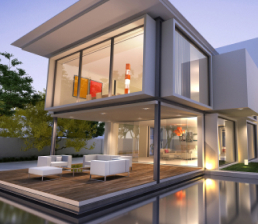Points to consider before hiring an Interior Designer
Points to consider before hiring an Interior Designer
Points to consider before hiring an Interior Designer
Hiring an interior designer can be a great decision if you want to transform your space or create a cohesive design for your home or office. Here is a step-by-step guide to help you hire an interior designer:
- Determine your needs and goals: Before you start looking for an interior designer, assess your needs and goals for the project. Determine which areas of your space you want to focus on, your preferred design style, and any specific requirements or preferences you have. This will help you communicate your expectations clearly to potential designers.
- Research and gather inspiration: Spend some time researching different design styles, trends, and ideas that resonate with you. Create a mood board or gather images that reflect your desired aesthetic. This will help you convey your vision to the interior designer and ensure that they understand your taste and preferences.
- Set a budget: Determine your budget for the project. Be realistic about how much you are willing to spend on the design fees, materials, furnishings, and any other expenses. This will help you narrow down your options and find a designer who can work within your budget.
- Seek recommendations and do online research: Ask friends, family, or colleagues for recommendations if they have worked with an interior designer before. You can also search online directories, websites, and social media platforms to find designers in your area. Look for portfolios, reviews, and testimonials to assess their previous work and reputation.
- Check credentials and qualifications: Verify the credentials and qualifications of the interior designers you are considering. Ensure they have the necessary education, training, and certifications. Membership in professional organizations like IIID can also be a good indicator of their professionalism and expertise.
- Review portfolios and interview designers: Take a close look at the portfolios of the designers you are interested in. Look for a diverse range of projects that showcase their versatility and ability to work with different styles. Once you have a shortlist, schedule interviews or consultations with the designers to discuss your project in detail. Ask about their design process, previous experience, and how they would approach your specific project.
- Discuss project scope and timeline: During the consultations, clearly communicate your project scope, including the rooms or areas you want to focus on, the desired timeline, and any specific requirements. Ask the designers about their availability, their approach to project management, and their estimated timeline for completion.
- Evaluate communication and rapport: Pay attention to the communication style and rapport between you and the designer. Effective communication and a good working relationship are crucial for a successful collaboration. Make sure the designer understands your vision, listens to your input, and can effectively communicate their ideas and suggestions.
- Request a proposal and cost estimates: After the initial consultations, ask the designers for a detailed proposal that outlines the scope of work, design concepts, estimated costs, and any other relevant details. Compare the proposals from different designers and assess them based on your requirements and budget.
- Check references and make a final decision: Before making a final decision, ask the designers for references from their previous clients. Contact those references and inquire about their experience working with the designer. This will give you valuable insights into their professionalism, reliability, and the quality of their work. Based on all the information gathered, make an informed decision and select the interior designer who best aligns with your vision and requirements.
Remember to sign a contract that clearly outlines the scope of work, payment terms, timeline, and any other important details before the project begins. Regular communication, collaboration, and providing feedback throughout the design process will help ensure a successful outcome.
Enjoy the PROCESS!







